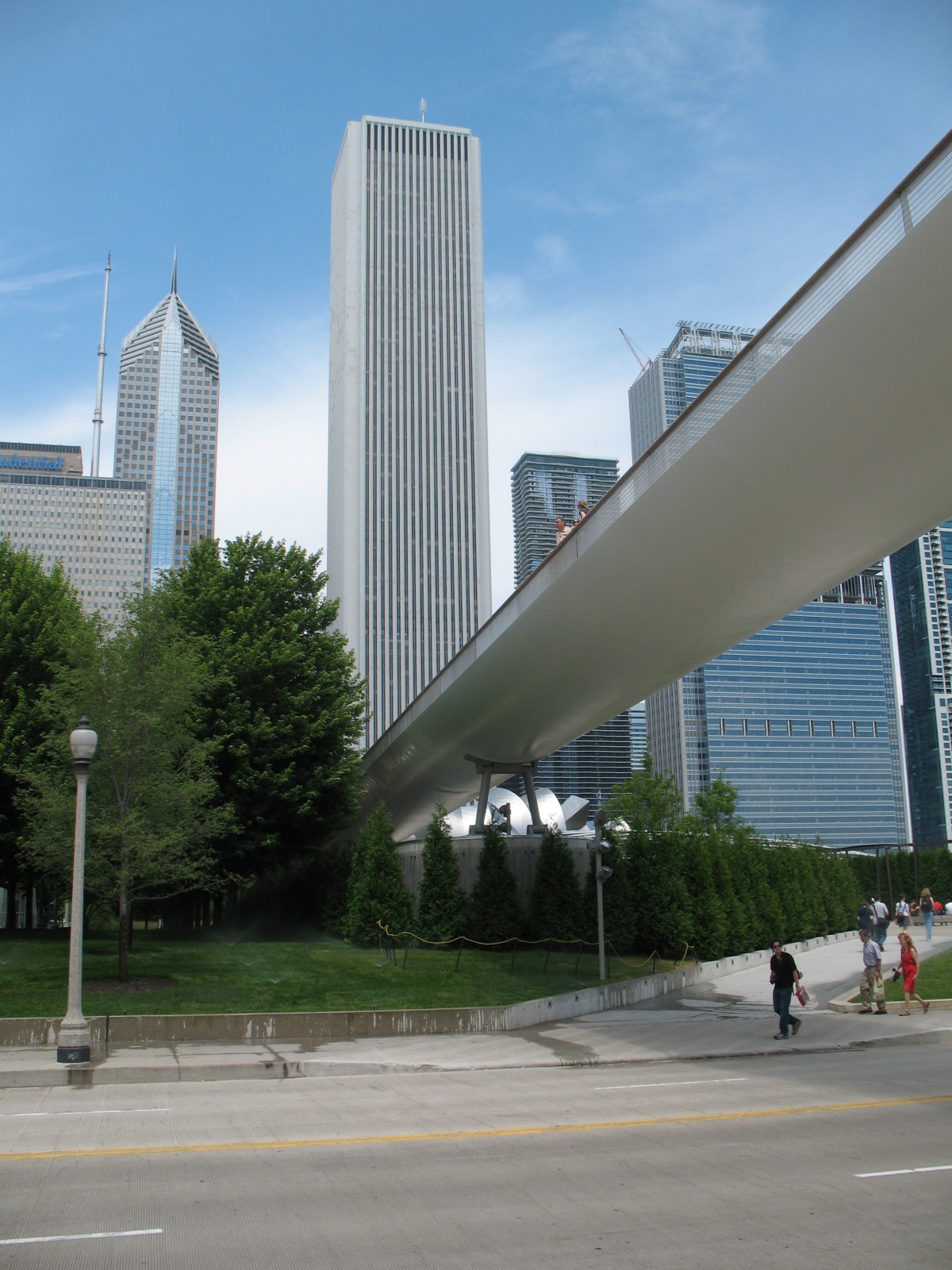The museum maintains a temporary exhibition program of traveling shows as well as in-house produced topical exhibitions. The professional staff maintains collections of over 24 million specimens and objects that provide the basis for the museum's scientific-research programs. These collections include the full range of existing biodiversity, gems, meteorites, fossils, and rich anthropological collections and cultural artifacts from around the globe.
They work in close collaboration with public programming exhibitions and education initiatives. Guests come from all around the world to see towering dinos, marvel at ancient artifacts from a royal Egyptian tomb or relax in a Chinese rock garden hidden inside the Cyrus Tang Hall of China. While a gigantic titanosaur skeleton named Máximo now guards the lobby, you'll find the Field's former greeter, SUE the T. There's something for everyone, and you can easily spend an entire day here.
This accredited museum in the Pilsen area is dedicated to preserving and facilitating knowledge about Latino life and history. Exhibits focus on Mexican culture as it's represented in the US and in Mexico, and the permanent collection includes folk art, ephemera, sculpture, textiles and drawings. Performing arts are also featured and the center hosts special events throughout the year to advance the museum's objectives. The Museum proudly houses more than 7,000 objects and its permanent collection is one of the largest of Mexican art in the country. After visiting the Museum, opt to have some authentic Mexican food nearby since Pilsen in loaded with great Mexican restaurants and bakeries. Already at its founding, the Field Museum had a large anthropological collection.A large number of the early natural history specimens were purchased from Ward's Natural History Establishment in Rochester, New York.
An extensive acquisition program, including large expeditions conducted by the museum's curatorial staff resulted in substantial collection growth. During the first 50 years of the museum's existence, over 440 Field Museum expeditions acquired specimens from all parts of the world. The Field Museum of Natural History is one of the biggest natural history museums in the world.
The Field Museum is considered a leader in its scientific and educational programming. The Field Museum's permanent collection includes more than 24 million different specimens, including fossils, meteorites, and gems. The Field Museum also houses an extensive library with more than 275,000 works. An estimated two million people visit Chicago's Field Museum annually. The Museum supports its Mission through medically themed exhibitions and programs, in addition to a strong contemporary art exhibition program. When this museum opened in its new aluminum-lined facility in 1996, it became the country's largest museum of contemporary art.
Featured works go far beyond two dimensions and include such diverse media as sculpture, photography, dance, performance and music. Three large exhibition floors showcase more than 7000 objects, including pieces by Sol LeWitt, Alexander Calder, Jeff Koons and Rene Magritte. Don't miss the sculpture garden, which covers more than an acre. If you're there in the summer, check out the summer solstice celebration that includes a number of unique, art-related events. Admission is free for children under 12 throughout the year and for all Illinois residents on Tuesdays. The Field Museum offers opportunities for informal and more structured public learning.
Exhibitions remain the primary means of informal education, but throughout its history the Museum has supplemented this approach with innovative educational programs. The Harris Loan Program, for example, begun in 1912, reaches out to children in Chicago area schools, offering artifacts, specimens, audiovisual materials, and activity kits. The Department of Education, begun in 1922, offers classes, lectures, field trips, museum overnights and special events for families, adults and children. The Field has adopted production of the YouTube channel The Brain Scoop, hiring its host Emily Graslie full-time as 'Chief Curiosity Correspondent'. Outside of Warsaw, the biggest Polish population lives in Chicago with more than one million people of Polish ancestry residing here.
This museum is one of the oldest and largest ethnic museums in the United States and has been collecting pieces of its history since the first immigrants settled here. The museum's library, with English and Polish titles in history and literature, is one of the most significant Polish libraries in the United States. It offers visitors a range of exhibits, resources and activities related to Polish history, culture and heritage, as well as Polish American history. Tour guides are available to assist visitors and provide additional information and events and exhibits are planned throughout the year. The Arts Club of Chicago is an art museum with public exhibitions and private tours. The club's first floors are open to the public at no admission cost; private tours of the permanent collection can be arranged.
The Arts Club, which opened in 1916, was home to the first United States showing of Pablo Picasso's work. The club has an exclusive membership program despite being open to the public; to become a member, one must be invited by a current club member. The Naper Settlement in Naperville gives visitors a glimpse into late 19th century and early 20th century living.
Founded in 1969, this historical site and history museum sees an estimated 150,000 tourists each year. Visitors can browse through the exhibits of history materials and business items of the past. This non-profit organization also offers group tours, audio guides, interactive exhibits, lectures, kids activities, and a restaurant. The Chicago Children's Museum was founded in the 1980s in response to cuts in the Chicago public school system.
The museum's first exhibits were kept in the Chicago Public Library; the exhibits underwent several moves before landing in their current home at Navy Pier in 1995. When the museum moved into its new home, it became the country's fourth largest children's museum with more than 650,000 members of the community served each year. The history museum might not pop in your head right away when considering which museum to bring your kids to, but it's definitely worth a look-see. Of course, there are several family-friendly events and happenings throughout the year—take a peek at the online calendar under the "families" audience tab.
Whether you want to investigate your heritage or explore the intricate details of Helvetic culture, take a trip to the Swedish American Museum. Clark St. in the heart of a traditionally Swedish, north side Chicago area, this 24,000-square-foot cultural center features two gallery spaces and delightful rotating art exhibits. Whether you're just visiting Chicago or you're a local looking for something interesting for the whole family to enjoy, a museum is a terrific destination.
You'll find world-class institutions throughout the area, and they're among the city's best attractions. Browse exhibits devoted to art, history, and science that will be entertaining and educational for kids and parents alike at these six museums in Chicago, Illinois. While the Chicago Architecture Foundation has been around since the 1960s, summer 2018 has a big treat in store for architecture junkies, when the foundation opens the brand-new Chicago Architecture Center overlooking the river.
In addition to the architecture tours CAF has become known for, the new center will feature nearly 10,000 square feet of exhibition space that will host an interactive Chicago Model and a new, permanent skyscraper exhibit. This natural history museum has a lot of interesting exhibits including a Tyrannosaurus Rex fossil, ancient Egyptian sarcophagi, and much more. The DePaul Art Museum is located on DePaul University's campus in Chicago's Lincoln Park neighborhood. The DPAM has a permanent collection of more than 3,500 different objects with a heavy focus on international contemporary and modern art. The museum is open to the general public and admission is free. You can see bright, colorful murals by walking through the streets of Pilsen, but there's even more amazing art on display at the National Museum of Mexican Art in Harrison Park.
One of the largest Latinx cultural organizations in the U.S., exhibitions draw from a permanent collection of more than 10,000 works, highlighting the creativity of artists on both sides of the border. Start with the permanent exhibit "Nuestra Historias," which includes everything from 18th century religious paintings to a tricked-out lawn mower. Admission is always free, new shows debut regularly and you'll usually find vendors selling fresh churros just outside the museum's entrance, delicious. Situated on the University of Chicago campus in Hyde Park , the Smart Museum of Art was conceived as an institution where scholars could study the arts and develop exhibitions. Today, it's open to the public and is home to the college's collection of fine art and antiquities, including scrolls and ceramics from China as well as contemporary works by the likes of Kerry James Marshall and Andy Warhol. Explore exhibits devoted to sprawling installations and local art movements before taking a seat in the museum's courtyard smartly sculpture garden.
This award-winning museum features 40,000 square-feet of immersive exhibitions and experiences. View science storms, experience a flight simulator, tour the U-505 submarine, and try not to get lost in a mirror maze. The Museum of Science and Industry has so many galleries to explore, you're sure to learn something. It's so large, you may not even get a chance to see all the exhibits. Explore the rich history of Illinois at the Illinois State Museum in Springfield.
This museum is actually a system of galleries and museums that feature exhibitions exclusive to the state of Illinois. Visitors can catch a glimpse into the past to see how Native Americans lived, view the anthropology exhibit, attend various events, and much more. The Field Museum and its collections originated from the 1893 World's Columbian Exposition and the artifacts displayed at the fair. In order to house for future generations the exhibits and collections assembled for the Exposition, Edward Ayer convinced the merchant Marshall Field to fund the establishment of a museum. The Columbian Museum of Chicago occupied the only building remaining from the World's Columbian Exposition in Jackson Park, the Palace of Fine Arts. It was the first place in the city of Chicago to focus only on poetry as an art form, which was the dream of Poetry magazine's Harriet Monroe.
The foundation's goal is to heighten public and cultural interest in poetry. Today, the Poetry Foundation has a collection of more than 30,000 poems, a gallery for exhibits, and a space for public events and performances. The Balzekas Museum of Lithuanian Culture in Chicago is the United States' biggest museum dedicated to Lithuania. The Balzekas Museum highlights the country's culture, politics, history, language, and traditions, all with a special focus on Lithuanian Americans. In addition to its exhibits and collection, the museum will often showcase various workshops and events dedicated to Lithuanian culture.
Chicago is the perfect home for the Balzekas Museum; the Windy City has the largest number of Lithuanian people living anywhere in the world outside of Lithuania. The National Hellenic Museum is the second oldest Greek and Greek-American cultural center in the United States. Located in Chicago's Greektown, the National Hellenic Museum focuses on Greek culture, contributions to the United States, and immigration. The museum is well known for its Oral History Project, which has captured the stories of more than 300 people. The museum's collection dates back to 1200 BCE and contains thousands of artifacts. Chicago's Jane Addams Hull-House Museum was a settlement house founded in 1889 by Ellen Gates Starr and Janes Addams.
The Hull House served as a place for European immigrants to call home after landing into the United States. Within 30 years of its opening, the house had expanded to include 13 buildings and a summer camp. Hull House set the national bar for what a settlement house should look like. Today, the museum includes more than 5,500 artifacts on display in its permanent collection.
The Loyola University Museum of Art, or LUMA, is an art museum on the campus of Loyola University Chicago. The museum's permanent collection has an estimated 300 pieces, with the main focal point being the Martin D'Arcy Collection of Renaissance, Baroque, and medieval art. Some pieces of the collection are thought to date back to 1150. Bronzeville Children's Museum is the first and only African American children's museum in America. The museum was founded on Chicago's South Side and is sponsored by regional grocery store giant Jewel-Osco. The Bronzeville Children's Museum's interactive exhibits are best suited for children between the ages of three and nine.
The Art Institute of Chicago is one of the oldest and biggest art museums in the United States with more than 300,000 works in its permanent collection. The AIC was founded in 1879; it has been in its present-day location since 1893. The museum is one of the most visited in the country, with an estimated 1.5 million people walking through its doors each year. Children and kids-at-heart love the Museum of Science and Industry, whose mission statement includes "encouraging the inventive genius" in every visitor. One of the largest science museums in the world, it fills its 400,000 square feet with hands-on exhibits including a World War II submarine, Boeing 727 aircraft and a movie screen large enough to rival IMAX. Equal parts educational and entertaining, the museum's artifacts, digital displays and interactive experiences will appeal to visitors of any age.
Founded in 1856 by the Chicago Historical Society, the museum burned down in the Great Fire of 1871. Three years later, another devastating blaze incinerated the remains of its collection. Things began looking up in 1920, when the Society bought paintings, manuscripts, and artifacts from the estate of confectioner Charles F Gunther, including a compass owned by George Washington and Abraham Lincoln's deathbed. A century later, the Chicago History Museum continues to dedicate itself to telling the story of Chicago and its people through engaging exhibits covering music, film, design, fashion and historic events. Set amid prairies and gardens in Lincoln Park, the Peggy Notebaert Nature Museum offers a variety of ways to heighten your appreciation of the natural world. Exhibitions explore Chicago's prairie and river ecosystems as well as the biology of Ice Age mammals and Midwestern birds.
Kids will enjoy taking a guided tour of the museum's 1/3-mile outdoor nature trail while guests of all ages will be wowed by the thousand fluttering beauties that reside within the 2,700-square-foot Judy Istock Butterfly Haven. It's near the middle of Lincoln Park, so it's a great spot to go to mid-stroll too. When this institution opened in 1961, African-American history was suffering serious neglect at the hands of the city's—and for that matter the nation's—cultural institutions. You'll even find Chance the Rapper's Grammy award for best rap album on display.
The permanent collection here is always expanding, making it good for multiple trips. The Chicago Botanic Garden, a 385-acre living plant museum, features 27 distinct gardens and four natural areas. Those figures are impressive enough to draw more than one million visitors annually, making it one of the most frequented botanical gardens in the United States.
While the venue is open to the public and offers free admission , its 53,000 members receive perks like free parking and discounts at the gift shop and on select classes and events. Inside the gates, the Garden's living collections feature more than 2.6 million plants from around the world that grow well in the Chicago area and are adapted to Midwest climate and soils. Expect to see a lush array of trees, shrubs, vines, and tropical plants, among other varieties. One of the world's best Impressionist collections and the greatest concentration of Frank Lloyd Wright architecture in the world are just a couple of the superlatives that characterize the treasures in Chicago's best museums.
Whatever your interest, from literature to industry, Pacific white-sided dolphins to Egyptian mummies, you'll find it in one of the city's cultural institutions. The city also smartly caters to kids in search of nothing more than a fun place to run around for an hour as well as adults deeply invested in rare and obscure work. While most museums on this list are now open to visitors, stay tuned this spring as the rest continue to open their doors. Wonder Works is best for the little guys, ages birth to eight-years-old. This children's museum is a designated shoe-free play space, with things to climb, jump and run on. Art, performance, design and building are the main objectives here and kids are encouraged to be creative and let their personalities shine.
Over 600 special events are held every year, including a concert series, celebration of African American History and Dino Works. Kids here can meet other pals and brush up on their social skills and adults can hang out with new friends, too. Local parents and educators founded KidsWork because they wanted a safe and fun place for kids to play and learn. What they've found, is that the community as a whole benefits. Kids can roam around the museum's two floors, discovering science, art and movement exhibits.
Highlights include the Pet Vet, Imagination Theater, Art Works, Tot Spot and Light Exhibit. The Art Institute of Chicago is an encyclopedic art museum located in Chicago's Grant Park. It features a collection of Impressionist and Post-Impressionist art in its permanent collection. The Museum of Broadcast Communications is one of the quirkier museums Chicago has to offer.
It features exhibits you might expect, like the one on Saturday Night Live. But it also makes room for Chicago hero Svengoolie, whom you must learn all about to make any trip to the city complete. Though the museum first opened its doors in 1987, it has only been at its current location since 2012, making now a better time than ever to experience this Chicago gem. If you don't want to spring for a pricier boat tour, this museum is a great way to experience Chicago's famous waterway. Chinatown is a favorite stop among visitors to Chicago, and the Chinese-American Museum of Chicago is a must-see of the neighborhood.

























No comments:
Post a Comment
Note: Only a member of this blog may post a comment.